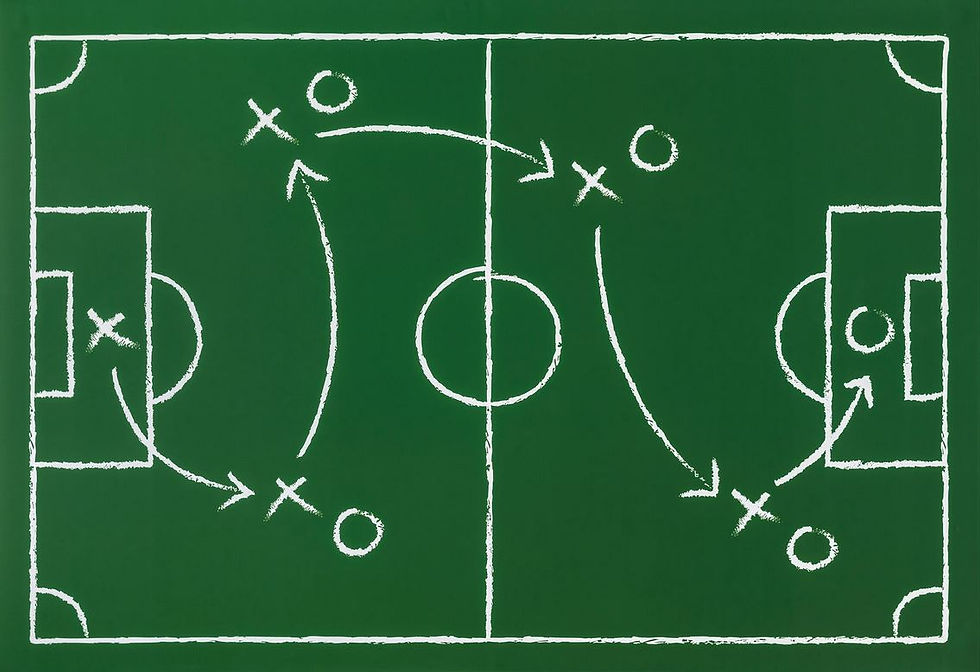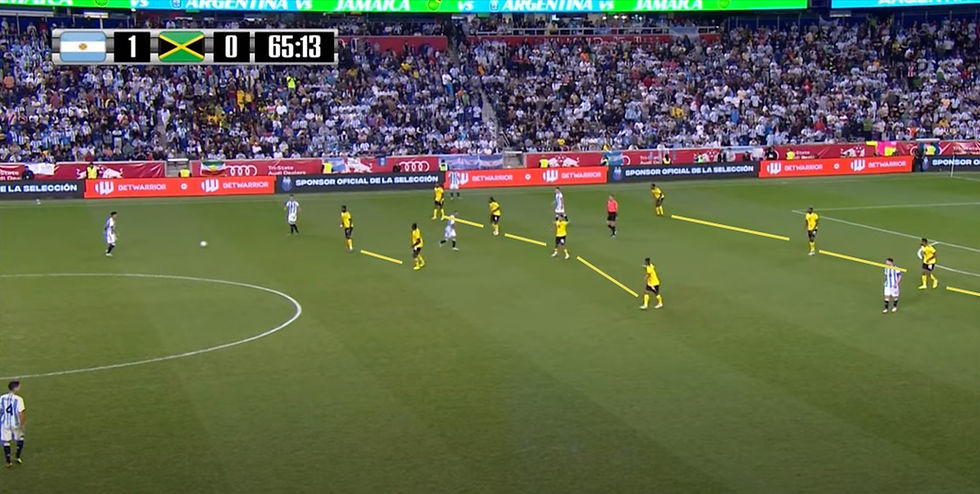World Cup Tactical Trends: 2010 South Africa
- All Angles Football -
- May 14, 2020
- 4 min read

Over the past few years, many tactical developments and trends have come through teams, leagues and countries. Many of these tactical trends, that tend to mostly originate from clubs, are often displayed on the international stage such as the World Cup or the Euros. In the next few posts, I will briefly be breaking down some tactical trends from the past three World Cups. This is the first of the series where I will summarize some of the main tactical trends from the 2010 World Cup.
4-2-3-1, Wingers and the No. 10
The 2010 World Cup saw mainstream use of the 4-2-3-1 formation, used by teams including Spain, Germany, the Netherlands, Brazil. That made three of the four semi-finalists teams to use the 4-2-3-1. Throughout the 2006 World Cup, the 4-4-2 was the common formation. This rise of the 4-2-3-1 comes at a time when wingers such as Ronaldo, Robben, Pedro, and Robinho were all already or becoming big names on the world stage. These players are all different in nature and in the roles they play in their team. But one common factor is that they are tricky skillful dribblers who could take defenders on one-on-one and penetrate opposition defense lines. The 4-2-3-1 allowed these players to play as they desired in their roles as there were two holding midfielders who would hold their position (hence the term) in order to protect their team’s back four and allow the attackers a bit more freedom than usually allowed. A lot of this freedom was displayed throughout the tournament with the individual skills of the wingers who would often dribble into the box or take on full backs one-on-one to penetrate the opposition’s defensive line. A few clips can be seen below:
As seen in these clips, these players tend to be tricky, fast good dribblers who used their individual skill to break lines and penetrate the opposition defense as mentioned above.
The 4-2-3-1 also allowed the reintroduction of the No. 10 playmaker role, which was absent from the standard 4-4-2. Players that played this role included in the tournament included Xavi (not a typical No. 10), Kaka, Sneijder and Ozil. These players were crucial to their team going forward but this role allowed them to play as the focal point of their team's attack without having to worry too much about their defensive roles (as there were 2 holding midfielders for protection) - the essence of a No. 10. Some clips of Kaka and Ozil can be seen below.
As mentioned and shown in the video, these No. 10s are the focal point of their teams' attacks. They will sometimes drop deep, drift wide, drift into half spaces and make runs into the box to provide assists for the other attackers and sometimes score goals themselves.
Tiki-Taka
The 2010 World Cup, also saw Spain make its mark in the world of football with their tiki-taka possession based style of play, popularly known from Pep’s Barcelona team of the same era. The emergence of this can be traced back to Johan Cryuff and Rinus Michels from the 1970s but that’s a whole different story for another day. The point is that with the emergence of players such as Xavi, Sergio Busquets, Iniesta and Fabregas in their prime, Spain were able to play a very similar tiki-taka style football. These were players who were trained to and possessed the qualities to make incisive and smart passes and movements on the ball allowing their team to retain possession. The base of this style is usually a 4-3-3 but Vincente Del Bosque opted to go for a 4-2-3-1 with Iniesta playing from the left hand side, coming inside often into half spaces to help retain possession and move the ball forward while Xavi played as a No. 10 which is not usually his role. The possession based football Spain displayed wasn’t exactly the tiki-taka developed and utilized at Barcelona by Pep Guardiola but it was very similar. This was displayed by Pep’s Barcelona and the 2010 Spanish team possessing a similar core of players such as Iniesta, Xavi and Sergio Busquets. However a few differences are:
Pep used both wingers to stretch the field of play and penetrate defensive lines while Del Bosque didn’t do this initially but eventually used one winger to do this (as Iniesta occupied the other slot, because of the use of the 4-2-3-1 formation instead of a 4-3-3)
Pep’s style was a bit more exciting and urgent to move the ball forward into the opposition area with purpose but Del Bosque’s style was more to prevent conceding goals and edge games by close scores.
The video below is not from the 2010 World Cup, but from the same Spanish team in October 2011. It is a very good display of the tiki-taka style football the team played from 2008-2014.
This video below is from FIFA's YouTube and gives a short history and context of the tiki-taka style the team played.
The tiki-taka tactic made possession football with short incisive passes a go to for many top clubs around Europe including PSG, Manchester City and Bayern. It was very popular and seen as the best way to play football until Spain were knocked out in the group stages in 2014. This coincided with the rise of Jurgen Klopp's gengen pressing which influenced the Germany team that won in 2014 while France also displayed in 2018 that counter-attacking is just as successful to win matches and tournaments. Possession football is still very popular and is a go to tactic for many teams across Europe but it is not looked upon as highly as before as other tactics are also used succesfully such as counter-attacking and gengen pressing.
To summarize, the 2010 World Cup saw the emergence of the 4-2-3-1 as a go to formation for many teams and this continued across Europe after the tournament. It allowed many wingers and No. 10s to play an influential role in their team while providing the team with defensive stability and overall balance. The Spanish team that won the tournament made its mark on the football world with its tiki-taka style tactic and are now looked upon as one of the greatest international teams of all time.
* This is the first of a three part series on World Cup Tactical Trends. The second part will be posted in the next two weeks.




Commentaires